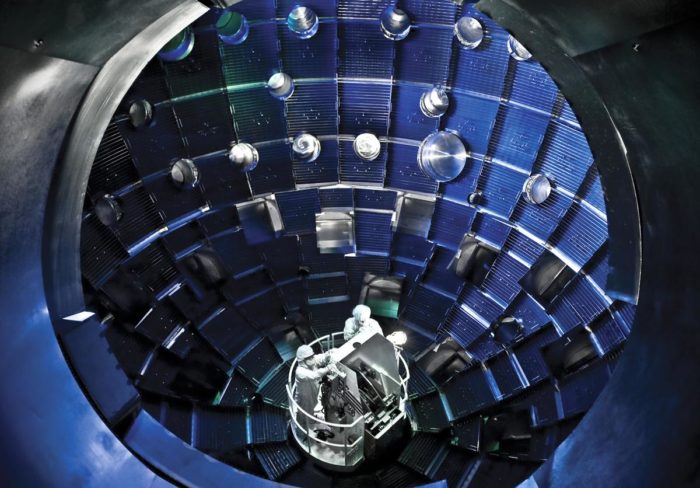Aug
31
2021
 We are approaching two years into this pandemic and we still haven’t proved the origins of the SARS-CoV-2 virus. However, this is not unusual at all, and in itself is not suspicious. It took 13 years to identify the origin of SARS, and we have never identified the origins of some Ebola outbreaks. But what do we know about the origins of SARS-CoV-2? The question has become highly political, which is unfortunate. Let’s review what the actual evidence has to say.
We are approaching two years into this pandemic and we still haven’t proved the origins of the SARS-CoV-2 virus. However, this is not unusual at all, and in itself is not suspicious. It took 13 years to identify the origin of SARS, and we have never identified the origins of some Ebola outbreaks. But what do we know about the origins of SARS-CoV-2? The question has become highly political, which is unfortunate. Let’s review what the actual evidence has to say.
If we go back to the beginning of the pandemic, the early scientific investigation of the virus found that it was 96% identical to a bat coronavirus in the region. Zoonotic spillover is common, and the virus originated in a part of the world with wet markets and close contact with wild animal populations. Direct examination of the virus also did not show any telltale signs of deliberate manipulation. There has been some scientific debate on this topic, but in the end there is general agreement among scientists that there is no smoking gun of genetic manipulation. For these reasons it was concluded early that the most probable origin of COVID was from animals, either directly from bat to human or through an intermediary.
This conclusion was based on examination of the virus itself and the the reservoirs of similar viruses in the region. This was, and by many still is, considered the most likely origin. Researchers have searched for the precise animal origin, and so far have not found it, but that is not in itself unusual or suspicious.
Continue Reading »
Aug
30
2021
 In 1985 Michael Denton, arguing against the fact of evolution, made the following observation:
In 1985 Michael Denton, arguing against the fact of evolution, made the following observation:
“…to postulate a large number of entirely extinct hypothetical species starting from a small, relatively unspecialized land mammal and leading successively through an otter-like state, seal-like stage, sirenian-like stage and finally to a putative organism which could serve as the ancestor of the modern whales. Even from the hypothetical whale ancestor stage we need to postulate many hypothetical primitive whales to bridge the not inconsiderable gaps which separate the modern filter feeders (baleen whales) and the toothed whales.”
Denton (1985) Evolution: A Theory in Crisis, Adler & Adler Publishers:Chevy Chase, MD. p. 174
In 1992 creationist Duane Gish made an even more bold statement:
“The marine mammals abruptly appear in the fossil record as whales, dolphins, sea-cows, etc. There simply are no transitional forms in the fossil record between the marine mammals and their supposed land mammal ancestors.”
Duane Gish (1992), Evolution: The Challenge of the Fossil Record. Creation-Life Publishers: El Cajon, CA. p. 79
This remains a common strategy for creationists – point to current gaps in the fossil record and then pretend this is a problem for evolutionary theory. The unstated major premise here is that if evolution were true, we would by necessity already possess a fairly complete fossil record for the evolution of every single extant species, or at least (arbitrarily defined) major group. This premise is simply false. We have fossil windows into a process that occurred over 600 million years (if we talk only about multicellular creatures), all over the world, involving an estimated 5 billion species. There are gaps and always will be gaps.
Continue Reading »
Aug
26
2021
 The idea that all life on Earth is related through a nested hierarchy of branching evolution, occurring over billions of years through entirely natural processes, is one of the biggest ideas ever to emerge from human science. It did not just emerge whole cloth from the brain of Charles Darwin, it had been percolating in the scientific community for decades. Darwin, however, put it all together in one long compelling argument. Alfred Wallace independently came up with essentially the same conclusion, although did not develop it as far as Darwin.
The idea that all life on Earth is related through a nested hierarchy of branching evolution, occurring over billions of years through entirely natural processes, is one of the biggest ideas ever to emerge from human science. It did not just emerge whole cloth from the brain of Charles Darwin, it had been percolating in the scientific community for decades. Darwin, however, put it all together in one long compelling argument. Alfred Wallace independently came up with essentially the same conclusion, although did not develop it as far as Darwin.
On the Origin of Species was published in 1859, and it quickly won over the scientific community, with natural selection acting on variation becoming the dominant working hypothesis. But that, of course, was not the end of the story, only the beginning. If Darwin’s ideas were wrong, they would have slowly withered from lack of confirming evidence. But they were largely correct, even insightful. The last 162 years of research and observation have confirmed to an extraordinary degree the core ideas that life is related through branching connections, and that natural selection is a primary driving force of evolution. The theory has also evolved quite a bit, and is now a mature and complex scientific discipline sitting on top of mountains of evidence, including fossils, genetics, comparative anatomy, developmental biology, and direct observation. The basic fact of evolution could have been falsified thousands of times over, but it has survived every time – because it is essentially true.
Acceptance of the basic tenets of evolutionary theory, therefore, is a good litmus test for any modern society. Of what, exactly, is another question, but certainly something is going wrong if the population does not accept this overwhelming scientific consensus. The US ranks second from the bottom (only Turkey is worse) in terms of accepting evolutionary theory. Researchers have been tracking the statistics for decades, and now some of the lead researchers in this field have published data from 1985 to 2020 (sorry it’s behind a paywall). There are some interesting details to pull from the numbers.
Continue Reading »
Aug
24
2021
 Quantum computers are at the cusp of becoming an amazing technological breakthrough with many applications. Some heavy-hitters are working on the technology, including IBM and Google, and progress has been steady. IBM predicts it will have a 1000 qubit quantum computer by 2023. Quantum computers are essentially a direct application of quantum weirdness, and so now every time there is an advance in basic quantum mechanics the reporting is likely to mention how it might benefit quantum computing technology. In some cases, this is actually reasonable.
Quantum computers are at the cusp of becoming an amazing technological breakthrough with many applications. Some heavy-hitters are working on the technology, including IBM and Google, and progress has been steady. IBM predicts it will have a 1000 qubit quantum computer by 2023. Quantum computers are essentially a direct application of quantum weirdness, and so now every time there is an advance in basic quantum mechanics the reporting is likely to mention how it might benefit quantum computing technology. In some cases, this is actually reasonable.
A quantum computer can be ridiculously more powerful than a traditional computer. Calculations that would take trillions of supercomputers billions of years to complete could be performed by a quantum computer in minutes. We don’t have such quantum computers yet, but when we do they will be able to perform specific computing tasks better than any supercomputer. They will essentially break any current encryption, can model the weather, and be used for things like drug development and many kinds of research. You won’t have one on your desktop, however. They do not function like ordinary computers and will not replace them.
The primary difference between a standard computer and a quantum computer is this – computers store data in bits, which is a binary unit of information, usually represented by a 0 or 1. Eight bits are chunked into bytes which have 256 states, representing every letter, number, and punctuation. Quantum computers, however, have qubits, which is a quantum bit. Qubits exploit the quantum phenomenon of superposition, the ability for a particle to be in more than one state at once. A qubit can therefore be in any state between 0 and 1 inclusive, and in fact can be in every state from 0 to 1 at the same time. Qubits are then entangled with each other and their interaction (specifically constructive and destructive interference) is used to produce the probable answer to a calculation. Yes – results are probabilistic, and they are typically checked against a regular computer to make sure the quantum computer is working.
Continue Reading »
Aug
23
2021
 In the early days of my skeptical activism I and my colleagues often took on some of the classics of pseudoscience, such as UFOs, dowsing, astrology, and ghost-hunting. As a New England-based group we also focused on local pseudoscience, which means ghosts and ghost-hunting. By coincidence we had perhaps the most famous ghost hunters in the world living just a couple towns over from us, Ed and Lorraine Warren. They were made famous by the Amityville Horror case, and more recently by The Conjuring series of movies.
In the early days of my skeptical activism I and my colleagues often took on some of the classics of pseudoscience, such as UFOs, dowsing, astrology, and ghost-hunting. As a New England-based group we also focused on local pseudoscience, which means ghosts and ghost-hunting. By coincidence we had perhaps the most famous ghost hunters in the world living just a couple towns over from us, Ed and Lorraine Warren. They were made famous by the Amityville Horror case, and more recently by The Conjuring series of movies.
Even 23 years ago, when we encountered the Warrens, they were famous. They made the college circuit with their talks and slide-shows, held ghost-hunting classes, and spawned dozens of breakaway groups over the years. They were clearly the big fish in our little pond, and so we didn’t know what quite to expect when they agreed to allow us to interview and then investigate them. I want to stress this was a collaborative endeavor throughout, although they certainly weren’t happy with our final conclusions.
On our initial visit Ed gave us a tour of his basement museum, which he claimed was the most haunted place in the world. It included that Raggedy Ann doll that is now the focus of The Conjuring movies, which was kept behind a glass case with a stern warning not to open. I was amused that the collection of haunted items includes a D&D handbook, the Unearthed Arcana. We also asked Ed to show us his best piece of evidence after years of hunting ghosts, and without any hesitation he said it was his video of the White Lady of Union Cemetery. This video has now been digitized and uploaded to Youtube, so you can see for yourself what Ed considered his best evidence.
Continue Reading »
Aug
20
2021
 By coincidence, in November 2019 I did an investigation into the question – does wearing a facemask reduce the risk of transmitting or getting a respiratory infection? I was in Australia at the time and noticed that their large Asian population frequently wore facemasks in public. It seemed odd, and my initial hypothesis was that this was likely a cultural behavior without supporting evidence. I was surprised to find, when I reviewed the primary literature at the time, that I was wrong. In fact, masks do work, in certain circumstances.
By coincidence, in November 2019 I did an investigation into the question – does wearing a facemask reduce the risk of transmitting or getting a respiratory infection? I was in Australia at the time and noticed that their large Asian population frequently wore facemasks in public. It seemed odd, and my initial hypothesis was that this was likely a cultural behavior without supporting evidence. I was surprised to find, when I reviewed the primary literature at the time, that I was wrong. In fact, masks do work, in certain circumstances.
The basic concept is simple – when you breath, talk, cough, or sneeze you exhale tiny droplets, and if you have a viral respiratory illness those droplets are crawling with virus. Masks reduce the spread of those droplets, and otherwise you are basically spraying everyone with a shower of viruses. They are less effective at protecting the wearer, but they do reduce the risk of getting sick as well. However, that reduction is only statistically detectable if you are in a high-risk situation to begin with. This includes being in the same room with someone who is sick, or being in a crowd during an epidemic. Out in the general population not during an epidemic the baseline risk of catching a virus is low, and so there is no statistically detectable benefit from wearing a mask.
This conclusion was based on information available before anyone ever heard the word “Covid-19”. Who would have thought at the time that this entirely scientific question would become so political so fast? The efficacy of mask wearing suddenly became a very important question, so now we have much more research, and some specific to SARS-CoV-2. This research has raised our confidence that masks do, in fact, have efficacy (science-speak for “they work”), but has also drilled down to greater detail. Where does the research stand now?
Continue Reading »
Aug
19
2021
 I have been covering research into fusion power for years, so I like to give updates when a significant advance is made. A recent announcement from the National Ignition Facility warrants such coverage.
I have been covering research into fusion power for years, so I like to give updates when a significant advance is made. A recent announcement from the National Ignition Facility warrants such coverage.
Fusion is the process of combing light elements into heavier elements. It’s the process that fuels all suns, beginning by fusing hydrogen into helium. Protons of hydrogen are positively charged, so they repel each other. In order to overcome this electromagnetic force to get hydrogen protons to smack into each other with enough power to get them to fuse (by getting them close enough that the strong nuclear force takes over and binds them together) they need to be squeezed together at high temperature and pressure. Stars do this by being huge and having lots of gravity. Fusion research has been attempting to replicate the conditions at the core of stars on Earth.
There are two basic methods used, magnetic confinement and inertial confinement. Magnetic confinement uses powerful magnets to squeeze a plasma of hydrogen isotopes to high temperatures and pressures. This method has promise, but the trick is making magnets powerful enough and keeping the plasma from leaking. Further, you have to accomplish this without spending more energy than you get back from the fusion.
The National Ignition Facility uses the other method, inertial confinement, which essentially uses many powerful lasers (192 for the NIF) bombarding a confinement vessel causing it to explode with energy inward resulting in the high pressure and temperature, actually hotter than the core of the sun. Multiple fusion experiments have achieved the first goal – actual fusion. But that’s only the first step, and not sufficient to have a fusion reactor providing energy to the grid. The researchers report:
An experiment carried out on 8 August yielded 1.35 megajoules (MJ) of energy – around 70% of the laser energy delivered to the fuel capsule.
Continue Reading »
Aug
17
2021
 As we explore our options to reduce the CO2 produced by our energy, transportation, industry, and agricultural sectors, hydrogen remains a point of discussion. Hydrogen had a brief moment in the sun about 20 years ago, when the dominant talk was about the “coming hydrogen economy” which never came. Technical hurdles got in the way. For example, researchers never cracked the problem of safely storing large amounts of hydrogen, so while it has a high specific energy (energy per mass), it has a relatively low energy density (energy per volume) which limits its applications.
As we explore our options to reduce the CO2 produced by our energy, transportation, industry, and agricultural sectors, hydrogen remains a point of discussion. Hydrogen had a brief moment in the sun about 20 years ago, when the dominant talk was about the “coming hydrogen economy” which never came. Technical hurdles got in the way. For example, researchers never cracked the problem of safely storing large amounts of hydrogen, so while it has a high specific energy (energy per mass), it has a relatively low energy density (energy per volume) which limits its applications.
Still, hydrogen has persisted, waiting in the wings for its moment to reappear. I have written recently about using hydrogen fuel for aircraft, it remains the best fuel option for rockets, it may be ideal for large vehicles like trains and trucks. Hydrogen also has the potential to be a reasonably good energy storage medium, but certainly far from the best. Batteries, for example, have a round trip efficiency (the amount of energy you get back after storing then releasing energy) of between 70-95%. Hydrogen has a round trip efficiency of 47%. This is why, by the way, I think battery electric vehicles will ultimately win out against hydrogen fuel cells. If you use the heat generated by the burning of hydrogen then you can boost this efficiency to 66%, still short of even the worst battery. But still, for grid storage a hydrogen infrastructure may be practical.
Hydrogen also has lots of industrial and agricultural uses. It is a high-energy molecule, which can be fed into chemical reactions to make fertilizer and other useful products. It can also be used to make high energy density fuel to replace fossil fuel.
There is insignificant free hydrogen on Earth, which is why hydrogen is not a source of energy. It is an energy storage medium because you can expend energy to make it from hydrogen-containing compounds. This brings me to the focus of this article – where do we currently get our hydrogen from? First let me describe what is currently the optimal source of hydrogen: water. Water is H2O, and you can electrolyze water to separate it into its two component gases, hydrogen and oxygen. The hydrogen can then be burned back with oxygen to generate energy and water, without any other waste product. It’s a neat closed system with the only significant carbon footprint coming from the energy used to electrolyze the water.
Continue Reading »
Aug
16
2021
 A new study from Yale psychology researchers is the first to provide hard evidence that social media use magnifies expressions of outrage. This is likely not surprising to anyone familiar with social media, but we cannot take our anecdotal experience for granted, and so objective evidence is welcome.
A new study from Yale psychology researchers is the first to provide hard evidence that social media use magnifies expressions of outrage. This is likely not surprising to anyone familiar with social media, but we cannot take our anecdotal experience for granted, and so objective evidence is welcome.
The researchers used AI to analyze 12.7 million tweets from 7,331 Twitter users. The AI operationalized the assessment of how much outrage any particular tweet expressed. Of course it’s difficult to put a number on something abstract, like outrage, but as long as reasonable method was used consistently it could validly detect change over time. They found:
The team found that the incentives of social media platforms like Twitter really do change how people post. Users who received more “likes” and “retweets” when they expressed outrage in a tweet were more likely to express outrage in later posts. To back up these findings, the researchers conducted controlled behavioral experiments to demonstrate that being rewarded for expressing outrage caused users to increase their expression of outrage over time.
Again, this is not surprising. Vertebrate brains evolved to respond positively to reward (there are networks in the brain dedicated to this behavior). This is a well-researched aspect of behavior – reward positively reinforces the behavior that triggered the reward (or at least seemed to). In fact this behavior is so predictable you can base entire industries on it, with carefully calibrated precision. Casinos, for example, leverage this reward positive feedback loop to maximize engagement with gamblers, even though anyone with knowledge of the odds knows that the house will always win the long run.
Continue Reading »
Aug
10
2021
 The Intergovernmental Panel on Climate Change (IPCC) has just produced their sixth report. This report builds on their previous work, and the current version (AR6) is the product of 234 scientists from around the world. This is essentially an update from their previous reports, taking into account all new evidence that has come to light. You can read the full report, or the executive summary for policymakers, or if you want more detail, the technical summary. Many news outlets, like the BBC, have also put out a highlight summary of their own.
The Intergovernmental Panel on Climate Change (IPCC) has just produced their sixth report. This report builds on their previous work, and the current version (AR6) is the product of 234 scientists from around the world. This is essentially an update from their previous reports, taking into account all new evidence that has come to light. You can read the full report, or the executive summary for policymakers, or if you want more detail, the technical summary. Many news outlets, like the BBC, have also put out a highlight summary of their own.
I am not going to produce my own summary, just read the executive summary if you want the details. It’s only 39 pages. Instead, I am going to make some general observations.
First, for those who say there is no such thing as consensus in science, you are straight-up wrong. That is a strawman and denialist talking point. The strawman is the ubiquitous talking point that science is not determined by consensus. Of course it isn’t – consensus is determined by the science. The IPCC report is a great example of what consensus in science means – 234 experts pour over all the available evidence and then hash out a joint statement about what that evidence says. Next to each and every point there is a confidence notation, which they quantify – unlikely, likely, very likely, etc., with percentage confidence indicated for each notation. They are acknowledging the uncertainty, which torpedoes another strawman, equating consensus with certainty, or that the science is “settled” or that further research or debate is being shut down. This is all nonsense. The IPCC is simply a list of specific scientific statements, with a summary of the current evidence and degree of confidence.
Continue Reading »
 We are approaching two years into this pandemic and we still haven’t proved the origins of the SARS-CoV-2 virus. However, this is not unusual at all, and in itself is not suspicious. It took 13 years to identify the origin of SARS, and we have never identified the origins of some Ebola outbreaks. But what do we know about the origins of SARS-CoV-2? The question has become highly political, which is unfortunate. Let’s review what the actual evidence has to say.
We are approaching two years into this pandemic and we still haven’t proved the origins of the SARS-CoV-2 virus. However, this is not unusual at all, and in itself is not suspicious. It took 13 years to identify the origin of SARS, and we have never identified the origins of some Ebola outbreaks. But what do we know about the origins of SARS-CoV-2? The question has become highly political, which is unfortunate. Let’s review what the actual evidence has to say.
 In 1985 Michael Denton, arguing against the fact of evolution,
In 1985 Michael Denton, arguing against the fact of evolution,  The idea that all life on Earth is related through a nested hierarchy of branching evolution, occurring over billions of years through entirely natural processes, is one of the biggest ideas ever to emerge from human science. It did not just emerge whole cloth from the brain of Charles Darwin, it had been percolating in the scientific community for decades. Darwin, however, put it all together in one long compelling argument. Alfred Wallace independently came up with essentially the same conclusion, although did not develop it as far as Darwin.
The idea that all life on Earth is related through a nested hierarchy of branching evolution, occurring over billions of years through entirely natural processes, is one of the biggest ideas ever to emerge from human science. It did not just emerge whole cloth from the brain of Charles Darwin, it had been percolating in the scientific community for decades. Darwin, however, put it all together in one long compelling argument. Alfred Wallace independently came up with essentially the same conclusion, although did not develop it as far as Darwin. Quantum computers are at the cusp of becoming an amazing technological breakthrough with many applications. Some heavy-hitters are working on the technology, including IBM and Google, and progress has been steady.
Quantum computers are at the cusp of becoming an amazing technological breakthrough with many applications. Some heavy-hitters are working on the technology, including IBM and Google, and progress has been steady. In the early days of my skeptical activism I and my colleagues often took on some of the classics of pseudoscience, such as UFOs, dowsing, astrology, and ghost-hunting. As a New England-based group we also focused on local pseudoscience, which means ghosts and ghost-hunting. By coincidence we had perhaps the most famous ghost hunters in the world living just a couple towns over from us, Ed and Lorraine Warren. They were made famous by the Amityville Horror case, and more recently by The Conjuring series of movies.
In the early days of my skeptical activism I and my colleagues often took on some of the classics of pseudoscience, such as UFOs, dowsing, astrology, and ghost-hunting. As a New England-based group we also focused on local pseudoscience, which means ghosts and ghost-hunting. By coincidence we had perhaps the most famous ghost hunters in the world living just a couple towns over from us, Ed and Lorraine Warren. They were made famous by the Amityville Horror case, and more recently by The Conjuring series of movies. By coincidence,
By coincidence,  I have been
I have been  As we explore our options to reduce the CO2 produced by our energy, transportation, industry, and agricultural sectors, hydrogen remains a point of discussion. Hydrogen had a brief moment in the sun about 20 years ago, when the dominant talk was about the “coming hydrogen economy” which never came. Technical hurdles got in the way. For example, researchers never cracked the problem of safely storing large amounts of hydrogen, so while it has a high specific energy (energy per mass), it has a relatively low energy density (energy per volume) which limits its applications.
As we explore our options to reduce the CO2 produced by our energy, transportation, industry, and agricultural sectors, hydrogen remains a point of discussion. Hydrogen had a brief moment in the sun about 20 years ago, when the dominant talk was about the “coming hydrogen economy” which never came. Technical hurdles got in the way. For example, researchers never cracked the problem of safely storing large amounts of hydrogen, so while it has a high specific energy (energy per mass), it has a relatively low energy density (energy per volume) which limits its applications. A
A  The Intergovernmental Panel on Climate Change (IPCC) has
The Intergovernmental Panel on Climate Change (IPCC) has 




